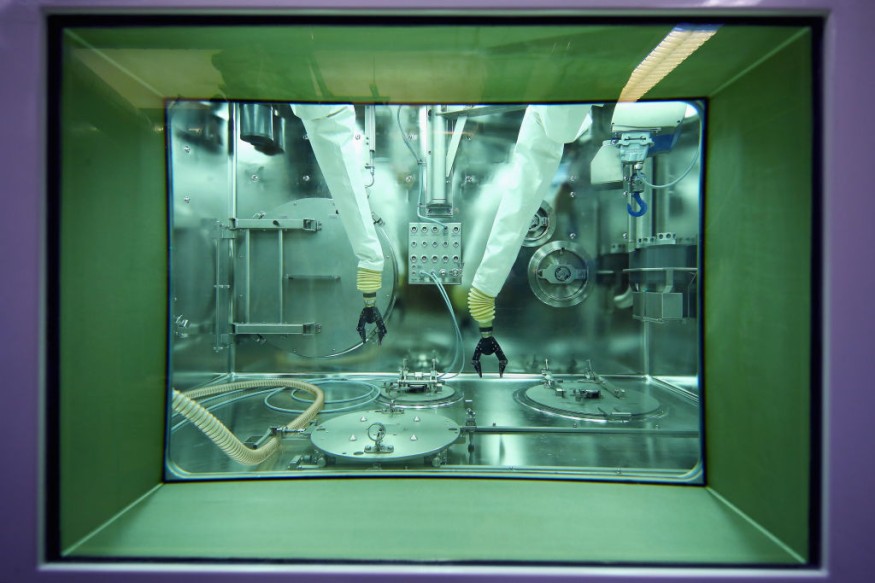To uncover more cosmic mysteries, the Large Hadron Collider (LHC) is poised to begin flinging subatomic particles together at previously unheard-of energies.
The move came after the collider found the Higgs boson, the so-called "God particle," 10 years ago.
According to the European Organisation for Nuclear Research, it will restart on Tuesday and continue for four years at all-time high energy of 13.6 trillion electron volts (CERN).
It's intriguing to think that research at the Large Hadron Collider on the tiniest scales may contain the answer to one of the biggest cosmic puzzles of all.
Space.com mentioned that physicists are considering a wide range of explanations for dark matter, including exotica like mini-black holes, modified gravity, supersymmetric particles, and other types of exotic matter. Dark radiation, a quasi-form of radiation with wavelengths extending to several light-years, is also being considered.

Large Hadron Collider About to Ramp Up At Billions of Proton Collisions
CERN's head of accelerators and technologies, Mike Lamont, mentioned that the ATLAS and CMS investigations need 1.6 billion proton-proton collisions every second.
He stated that to boost the collision rate, the proton beams would be shrunk to fewer than 10 microns similar to a human hair, which is around 70 microns thick.
The Higgs boson was initially discovered by the Large Hadron Collider a decade ago. It will be the subject of more research, thanks to the increased energy rate.
However, several recent discoveries have cast doubt on the Standard Model, and the recently improved collider will examine the Higgs boson in greater detail.
The discovery of the Higgs boson was initially revealed by CERN director-general Fabiola Gianotti in 2012. She noted that the boson is connected to some of the most significant outstanding problems in modern basic physics.
There will be 20 times more collisions this time compared to the collider's initial run, which led to boson's discovery.
"This is a significant increase, paving the way for new discoveries," Lamont mentioned in a Science Alert report.
Higgs Boson Explained
The discovery of the "God particle," also known as the Higgs boson, was monumental, The Scottish Sun reported. The particle provides matter its mass and keeps the universe's physical framework intact.
After years of discussion, the European Organization for Nuclear Research or CERN officially affirmed its existence on July 4, 2012. Much more needs to be discovered about it.
The "Big Bang" atom-smasher, the Large Hadron Collider (LHC), located close to Geneva, is where the groundbreaking particle discovery was made.
A basic constant of nature, the mass of the Higgs boson, which is unpredicted by the Standard Model, has been measured by researchers.
The mass of the Higgs boson may also affect other characteristics, such as the top quark's mass, the heaviest known fundamental particle, and the stability of the vacuum of the cosmos.
However, scientists claim that there are still a lot of unsolved issues concerning the particle, such as whether it can interact with dark matter and shed light on this enigmatic type of stuff.
Other open concerns include whether the Higgs boson has twins or relatives, and what causes the mass and self-interaction of the particle.
Impact of LHC Collisions 10 Years Ago
The Higgs boson particle, with its associated energy field, is assumed to have been essential to the universe's development following the Big Bang 13.7 billion years ago, Yahoo! News reported (via AOL). Its discovery was made possible by the batch of LHC collisions witnessed at CERN between 2010 and 2013.
The restart of collisions is anticipated to aid physicists in searching for hypothetical "dark matter" that exists outside of the observable cosmos.
Thought to be five times as common as regular matter, dark matter does not emit, reflect, or absorb light. So far, searches have turned up nothing.
The studies will use constricted proton beams smaller than 10 microns broad to boost particle collision rate and explore mysteries like dark energy.
RELATED ARTICLE : Photon Split Into Halves, Which "Nobody Believed Existed," Shows New Approach in Physics to See and Understand Light
Check out more news and information on Space and Energy in Science Times.












